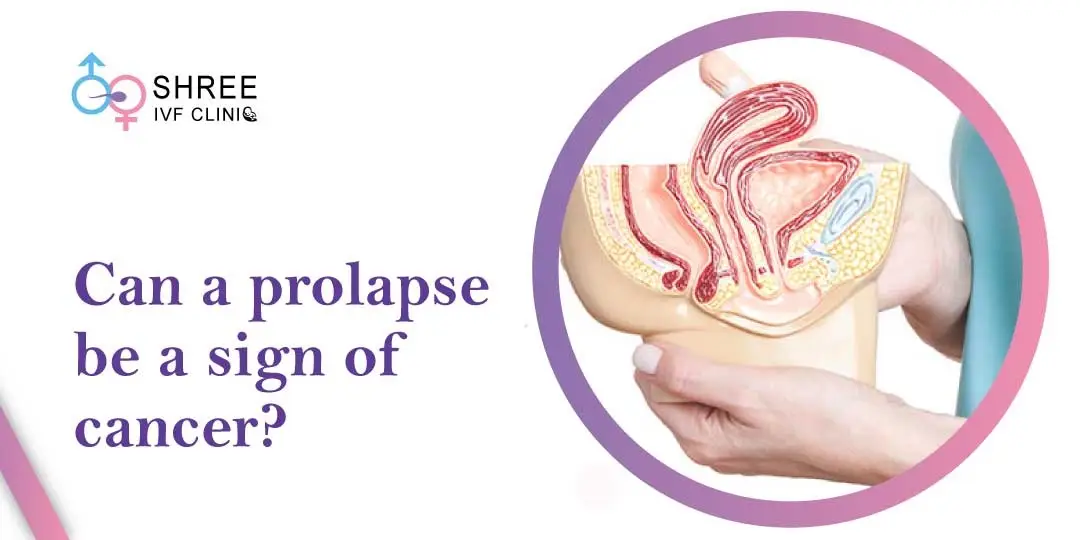Treatment for Pelvic Prolapse
UPDATED ON 16TH JAN. 2024
Welcome to our comprehensive guide on treating pelvic prolapse, a prevalent condition affecting millions of women in India.
We understand pelvic prolapse’s impact on your daily life, and we’re here to provide you with actionable information to help you find relief and restore your comfort and quality of life.
Whether you’re experiencing symptoms or seeking preventive measures, this guide will equip you with the knowledge you need to make informed decisions about your health.

AUTHOR
Dr Jay Mehta
Scientific Director & IVF Specialist with 10+ years of experience
CONDITION
GET IN TOUCH ON
What is Pelvic Prolapse?
Pelvic prolapse occurs when the muscles and tissues that support the pelvic organs become weak or damaged, leading to one or more pelvic organs descending into the vaginal canal.
This condition is often caused by childbirth, ageing, hormonal changes, obesity, and chronic conditions that increase intra-abdominal pressure.
Understanding the different types of pelvic prolapse and their symptoms is essential to seek timely intervention and prevent complications.
Types of Pelvic Prolapse
1. Bladder Prolapse (Cystocele): Bladder prolapse occurs when the bladder descends into the vaginal canal. This can lead to symptoms such as urinary incontinence, frequent urination, and a sensation of pelvic pressure.
2. Uterine Prolapse: Uterine prolapse involves the descent of the uterus into the vaginal canal. Symptoms may include feeling heaviness or pressure in the pelvis, discomfort during sexual intercourse, and difficulty emptying the bladder.
3. Rectal Prolapse: Rectal prolapse occurs when the rectum protrudes through the anus. Symptoms may include the sensation of a bulge or tissue protruding from the anus, difficulty controlling bowel movements, and constipation.
Symptoms and Impact on Quality of Life
The symptoms experienced by individuals with pelvic prolapse can vary depending on the type and severity of the prolapse. Common symptoms include a feeling of fullness or pressure in the pelvic area, discomfort, or pain during sexual intercourse.
Urinary problems such as urinary incontinence or frequent urination, bowel issues including difficulty emptying the bowels or constipation, lower back pain or discomfort, and tissue protrusion from the vaginal opening.
These symptoms can significantly impact your quality of life, making it difficult to perform daily activities, affecting emotional well-being, and straining personal relationships. Seeking medical attention if you experience any of these symptoms is crucial.
Non-Surgical Treatment Options
- Pelvic Floor Exercises (Kegel Exercises): Pelvic floor exercises, also known as Kegel exercises, are a non-surgical treatment option that can help strengthen the muscles supporting the pelvic organs. These exercises involve contracting and relaxing the pelvic floor muscles to improve tone and function. Regular practice of Kegel exercises can provide significant relief for mild to moderate cases of pelvic prolapse.
- Lifestyle Modifications: Besides pelvic floor exercises, certain lifestyle modifications can help manage pelvic prolapse symptoms. Maintaining a healthy weight can reduce strain on the pelvic area while avoiding heavy lifting, and managing chronic coughing can prevent further damage to the pelvic floor muscles.
- Pessaries: Pessaries are devices inserted into the vagina to support the pelvic organs and alleviate pelvic prolapse symptoms. They come in various shapes and sizes and can be fitted by a gynaecologists. Pessaries are a non-surgical option that may be suitable for women who prefer to avoid surgery or those with contraindications for surgical intervention.
Surgical Treatment Options
Surgical interventions may be recommended when non-surgical treatment options do not provide sufficient relief or in severe cases of pelvic prolapse. The specific surgical approach will depend on factors such as the type of prolapse and the individual’s overall health.
- Minimally Invasive Procedures: Minimally invasive procedures, such as laparoscopic or robotic-assisted surgeries, have revolutionized the treatment of pelvic prolapse. These techniques involve making small incisions and using specialized instruments to restore the support of the pelvic organs. The benefits of minimally invasive procedures include shorter recovery times, smaller incisions, and reduced post-operative pain.
- Traditional Surgical Approaches: In some instances, traditional surgical approaches may be necessary to address severe pelvic prolapse. These procedures involve making a larger incision in the abdomen or vagina to access and repair the affected pelvic organs. Your doctor will discuss these procedures’ potential benefits and considerations with you.
- Individualized Treatment Plans: Every patient is unique, and treatment for pelvic prolapse should be tailored to individual needs. Your gynecologists will assess the severity of prolapse, consider your preferences and overall health, and develop a personalized treatment plan that best suits your situation.

4,790+
379K+
” Every individual and couple’s journey is unique, and
finding the right solutions tailored to their specific
circumstances can make all the difference “
Conclusion
Pelvic prolapse can significantly impact your quality of life, but relief is possible with the proper treatment approach. Whether you opt for non-surgical methods or surgical intervention, consulting with the best gynecologists in Mumbai specializing in pelvic floor disorders is essential. They will guide you through the options and help you make an informed decision.
Remember, early detection and prompt treatment can lead to better outcomes. Don’t hesitate to seek medical attention if you suspect you may be experiencing pelvic prolapse symptoms.
Your gynecologists will conduct a thorough evaluation, including a physical examination and possibly additional diagnostic tests, to determine the extent of the prolapse and recommend the most appropriate treatment plan.
In addition to medical interventions, it’s essential to prioritize self-care and engage in activities that promote pelvic floor health. This includes maintaining a healthy weight, adopting a balanced fiber-rich diet, staying hydrated, and avoiding activities that strain the pelvic area excessively.
Lastly, it’s crucial to remember that you’re not alone. Pelvic prolapse is a common condition, and support networks and resources are available to help you navigate your journey. Connecting with others who have experienced similar challenges can provide emotional support and valuable insights.
In conclusion, don’t let pelvic prolapse hinder your quality of life. Take the first step towards restoration by seeking the guidance of a gynecologist. You can regain comfort, confidence, and control over your daily activities with the right treatment plan.
AUTHOR
Dr Jay Mehta
Scientific Director & IVF Specialist with 10+ years of experience
CONDITION
CALL US 24/7 FOR ANY HELP
GET IN TOUCH ON
Share Article on
Recommended Reading
How is a Bleeding Prolapse Treated?
Epithelial, Germ Cell, and Stromal are ovarian cancer types which are classified by their originating cells
Can Pelvic Organ Prolapse Go Away On Its Own?
Uncover the potential for pelvic organ prolapse (POP) to resolve naturally. Explore symptoms, management options, and factors influencing resolution.
Can Pelvic Organ Prolapse be a Sign of Cancer?
Pelvic Organ Prolapse (POP) doesn’t directly cause cancer, but women with this condition are at a higher risk of developing certain cancers like uterine & gallbladder cancers




